
Phase Transitions I: Sleep Architecture of Joseph’s Dreams
Synopsis The Joseph narrative in Genesis is stitched together with dreams—his own, the courtiers’, Pharaoh’s—yet the story itself unfolds according to the grammar of sleep.

Synopsis The Joseph narrative in Genesis is stitched together with dreams—his own, the courtiers’, Pharaoh’s—yet the story itself unfolds according to the grammar of sleep.

Synopsis This essay begins from the dream-saturated narratives of Vayetze, Vayeshev, and Miketz—Jacob’s ladder, Joseph’s dreams, and the dreams of Pharaoh and his ministers—and asks

Synopsis The narrative of the “stolen blessings” in Parashat Toldot presents a profound moral paradox: How could Rebecca, a righteous prophetess, and Jacob, the archetype

In the first aliyah of the Torah portion Toldot, the Torah turns inward: before Jacob and Esau become nations, they are in conflict within one

Chayei Sarah and the Physics of Makifim and Pnimim Synopsis This essay reveals a profound numerical convergence between Torah and quantum physics through the number

Summary This essay examines two consecutive narratives from Parshat Vayeira, each featuring a well and each posing a distinct epistemological challenge. Hagar’s well (Genesis 21:19)

(Parshat Vayeira, Genesis 21:14-21) Hagar and Ishmael are dying of thirst in the desert. In her despair, Hagar places her son under a bush and

There is not a Shabbos in which we do not read the parasha of Lot (Bereshis Rabbah 51:9) The Kabbalistic Dimension: Hidden Unities and Dimensional

And Sarah laughed within herself, saying, “After I have become worn out, will I have ednah [renewal]?” (Genesis 18:12) Sarah’s laugh is more than skepticism—it

When G‑d promises great wealth to Abram, after Abram refuses the spoils of war offered by the King of Sodom, Abram retorts: What can You

Neither from a thread to a sandal-strap, nor will I take from whatever is yours… (Genesis 14:23) After defeating five kings, Abraham (then called Abram)

Everyone marvels at the beauty of a rainbow—its perfect arc, its radiant colors. Yet, in truth, the rainbow doesn’t exist out there. The spectrum of

Alexander Poltorak Abstract This essay addresses the anigmatic statement of the Jewish Sages, stating that G-d created this world with the letter Heh and the
… mi‑b’sari echezeh Elokah—From my flesh I behold G‑d (Job 19:26) Introduction – “In His Image” The Torah’s initial description of humanity is both profound and enigmatic:
By Alexander Poltorak Introduction In the first installment of this essay, “Collapsing the Wave Function of Urim and Thummim,”[1] we discussed the inherent duality of
By Alexander Poltorak Abstract This essay explores the profound connections between the biblical laws of tzaraath (Leviticus 13-14) and modern concepts of entropy and the
By Alexander Poltorak Abstract The Torah portion of Shemini records the climactic eighth day of the Tabernacle’s dedication, the moment when divine fire finally descends.
By Alexander Poltorak Introduction The relationship between the laws of physics and the conditions necessary for life is among the most profound mysteries in both
By Alexander Poltorak “G‑d is a mathematician”Carl Friedrich Gauss I. Can We Prove that G-d created Axioms of mathematics? 1. Introduction A reader challenged me with a
By Alexander Poltorak This essay is dedicated to the Upsherenish of our dear grandson, Tzemach Asher Noam, Sheyiḥiyeh, which took place today in Houston. May
This post continues the discussion we began in “Bereshit: The Binary Universe I” and continued in “The Binary Universe II: Angels as Microprocessors.” At the
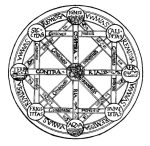
The parallels we have uncovered between the four elements, the letters of the Tetragrammaton, and the worlds of Seder Hishtalshelut suggest that the ancient sages
And G-d said to Abram, “Go forth from your native land and from your father’s house to the land that I will show you.” (Genesis
And it came to pass, when he was come near to enter into Egypt, that he said unto Sarai his wife: “Behold now, I know
Abstract This essay explores the profound significance of the letter Bet (ב), the first letter of the Torah, and its numerical value of two as

This essay explores a novel parallel between quantum mechanical principles and the biblical creation narrative through etymological analysis of the Hebrew terms “erev” (evening) and
Abstract This essay explores the profound connections between language, philosophy, physics, and spirituality in the context of Rosh HaShanah. By examining the linguistic roots of
It’s All in the Name Rosh HaShanah is usually translated as the New Year. When translated literally, it means the “Head of the Year.” In
Look forth from Thy holy habitation, from heaven, and bless Thy people Israel, and the land which Thou hast given us, as Thou didst swear

Introduction In this essay, I intend to draw a parallel between the singularity in space-time, such as the putative point of origin of the universe

The Temple Menorah served as a lighthouse, illuminating darkness and providing purpose and direction.

The Torah portion Tzav describes a ritual performed by Moses in consecrating Aaron as the High Priest (Kohen Gadol) and his sons as priests (kohanim):

In his commentary on this week’s Torah Portion, Yitro, Rabbi Chayim Vital, writing in the name of his teacher, the Ari-zal, states that Abel was
The current Torah portion Beshalach tells about the splitting of the Sea of Reeds. As I discussed in my essay, “Collapse and Revelation,” the splitting
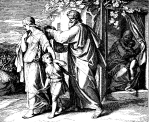
Like most Jewish families worldwide, last Shabbat, the conversation revolved around the situation in the Middle East and the war in Gaza. The question was,

And ye shall take you on the first day the fruit of goodly trees, branches of palm-trees, and boughs of thick trees, and willows of

I agree, all its elegance notwithstanding, the principle of least action does not prove the existence of an intelligent Creator. In a sense, when it

The spectacle of the universe becomes so much the grander, so much more beautiful, the worthier of its Author, when one knows that a small

The spectacle of the universe becomes so much the grander, so much more beautiful, the worthier of its Author, when one knows that a small

The least action principle is an expression of teleological reasoning where the initial states of the system are determined by the endpoints—the beginning and the

And for the unclean they shall take of the ashes of the burning of the purification from sin, and running water shall be put thereto

Introduction What could the Standard Model of particle physics possibly have in common with biblical accounts of the Israelites’ travels in the Sinai Desert, Kabbalistic

Einstein’s Special Theory of Relativity (STR) is broadly misunderstood by the public. In most popular science books, relativity theory is hailed for introducing relativity to
Structurally identical biblical accounts of creation, destruction, and restoration are viewed as a manifestation of dialectic triad thesis-antithesis-synthesis.
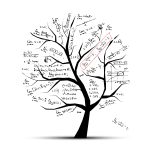
To Mendel Almost three years ago, in December of 2019, I posted an essay, “The Tree of Knowledge as a Metaphor for Superposition of States

Ki Tavo And it shall come to pass, when the Lord thy God shall bring thee into the land whither thou goest to possess it,
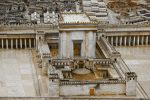
Introduction Today, on Tisha B’Av—the ninth day of Av, this year commemorated on the tenth day of Av because the ninth is Shabbat, when mourning

This is the fourth installment in the series of essays on the nature of the soul. The first three installments can be found here: What

…[H]e who tries to cure the soul, wishing to improve the moral qualities, must have a knowledge of the soul in its totality and

And G‑d created man in His own image, in the image of G‑d created He him; male and female created He them. And G‑d blessed

Now the earth was unformed and void. Genesis 1:2 We have a big problem in cosmology: the problem of the initial conditions of the universe at

Now as I beheld the Chayot [living creatures], behold one Ophan [wheel] at the bottom hard by the living creatures, at the four faces thereof. The
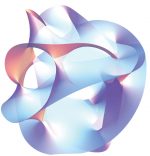
And they made their lives bitter with hard service, in mortar and in brick… Exodus 1:14 On a literal level, the Egyptian exile (Galut Mitzrayim)

And afterwards she bore a daughter, and called her name Dinah. (Genesis 30:21) In my previous essay, “The Conflict Between Joseph And His Brothers—A Gender

So the present passed over before him; and he himself lodged that night in the camp. And he rose up that night, and took his

Now Laban had two daughters: the name of the elder was Leah, and the name of the younger was Rachel. (Genesis 29:16) Rabbi Isaiah Horowitz (the

And these are the chronicles of Isaac… (Genesis 25:19) So Esau went unto Ishmael, and took unto the wives that he had Mahalath the daughter

And Abraham took another wife, and her name was Keturah. (Genesis 25:1) Keturah: This is Hagar. She was called Keturah because her deeds were as

A light shalt thou make to the ark…with lower, second, and third stories shalt thou make it. (Genesis 6:16) We mentioned in the previous posts

Make thee an ark of gopher wood; with rooms shalt thou make the ark, and shalt pitch it within and without with pitch” (Genesis 6:14)

Sweeping Infinities Under the Rug—or Renormalization Having dealt with internal contradictions in the previous section (see Physics of Tzimtzum I — The Quantum Leap and

In the previous post “Physics of Tzimtzum I—The Quantum Leap”, we gave a general overview of the mystical doctrine of tzimtzum—the cornerstone of Lurianic Kabbalah.

Introduction “In the beginning G‑d created the heavens and the earth.” (Genesis 1:1) “In the beginning G‑d created the heavens and the earth,” the Torah
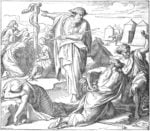
A Study in Form and Matter And Moses prayed for the people. And the Eternal said unto Moses: “Make thee a fiery serpent, and set it

And it came to pass on the morrow, that Moses went into the tent of the testimony; and, behold, the rod of Aaron for the

In the beginning, G‑d created the heaven and the earth…[1] (Genesis 1:1) Classical biblical commentators have given the first words of the Torah many

Шавуот Праздник Дарования Торы Aлександр Полторак Закончился праздник Песах. Все евреи поспешно убрали пасхальную посуду в особые шкафы или на чердаки до следующего Песаха.

For the life of the flesh is in the blood.” (Leviticus 17:11) The word translated here as “life” in the Hebrew original is nefesh, i.e.,

And every meal-offering of thine shalt thou season with salt; neither shalt thou suffer the salt of the covenant of thy G‑d to be lacking

The Torah portion Vayakhel deals with the construction of the Mishkan, i.e., the “Tabernacle.” In Kabbalah, the Mishkan is viewed as a microcosm that represents
It is related that on the day that Rabbi Yehuda HaNasi died, the Sages decreed a fast, and begged for divine mercy so that he

On the Eve of Shabbat, we received a government mailing containing documents that we were required to fill out and send back to the Census

In the beginning G‑d created the heaven and the earth. (Genesis 1:1) The first verse in the Torah is key to understanding the fundamentals

…And Abel was a keeper of sheep, but Cain was a tiller of the ground. And in process of time it came to pass, that Cain

Now the Serpent was more cunning than any beast of the field which the Eternal G‑d had made. (Genesis 3:1) When G‑d placed Adam

And the Eternal G‑d said: “It is not good that the man should be alone; I will make him a helpmate opposite him.” (Genesis 2:18)

As we discussed in the previous post “Singularity and Paradise,” Paradise offers a beautiful metaphor for modern cosmology wherein Eden is the initial singularity preceding

These are the chronicles of the heaven and of the earth when they were created, in the day that the Eternal G‑d made earth and

As always in science, every answered question breeds new questions. Now that we understand that the Tree of Life and the Tree of Knowledge are

And out of the ground made the Lord G‑d to grow every tree that is pleasant to the sight, and good for food; and the
And the messengers returned to Jacob, saying: “We came to thy brother Esau, and moreover he cometh to meet thee, and four hundred men with
And Abraham drew near, and said: ‘Wilt Thou indeed sweep away the righteous with the wicked? Perhaps there are fifty righteous within the city; wilt

Then drew near the daughters of Zelophehad …. of the families of Manasseh, the son of Joseph; and these are the names of his daughters:

The Lord spoke to Moses, saying: Speak to the children of Israel and you shall say to them that they shall make for themselves fringes

Meditations on the Maaseh Merkavah – IV This is the fourth and the final installment in the series of posts related to Ezekiel’s prophesy, Ma’aseh
(A popular summary of the paper “Towards Futuristic Interpretation of Quantum Mechanics” by Alexander Poltorak being currently prepared for publication) Quantum mechanics (QM) is one
Meditations on the Maaseh Merkavah – III This is the third installment in the series of posts related to the Ezekiel’s prophesy, Maaseh Merkava, “The

Meditations on the Maaseh Merkavah – II This post is a sequel to my previous post, “Space – Between Future and Past.” For background information,

Meditations on the Maaseh Merkavah – I We do science by studying nature. We study physics in a lab, peering into space or working out

The Special Theory of Relativity, published by Albert Einstein in 1905, was a game changer. It ushered the era of new physics dubbed by some

And all the tithe of the herd or the flock, whatsoever passeth under the rod, the tenth shall be holy unto the Lord.” (Leviticus 27:32)

And ye shall take you on the first day the fruit of goodly trees, branches of palm-trees, and boughs of thick trees, and willows of

And whosoever lieth carnally with a woman, that is a bondmaid, designated for a man, and not at all redeemed, nor was freedom given her;
In my post, “Ye Shall be Disentangled,” I suggested that the verse: “Ye shall be holy, for I, the Lord, your G‑d, am holy” (Levit.

March 14 is celebrated by nerds around the world as the Pi Day. When written in digits, 3/14 represents first three digits of the number
Welcome to the premiere of our first film, Quantum Torah. You can watch the film here: Don’t forget to subscribe to my channel here:

I am excited to announce that the premiere of our film “Quantum Torah” is scheduled for this Friday, March 1st. You can see the trailer

Vectors, Spins, and Gender Speak to the children of Israel, and have them take for Me an offering; from every person whose heart inspires him
Coming soon to a theater near you. Watch a trailer:

When thou shalt besiege a city a long time, in making war against it to take it, thou shalt not destroy the trees thereof by

In a Kabbalistic meditation on lighting Chanukah Menorah, the Arizal links the menorah lights with a supernal river (see Candle on the River). The Arizal’s

November 19, 2018 And he [Jacob] dreamed, and behold! a ladder set up on the ground and its top reached to heaven; and behold, angels

And he [Avraham] spoke with them, saying, “…Listen to me and entreat for me to Ephron the son of Zohar. That he may give me

And the life of Sarah was one hundred years and twenty years and seven years… (Gen. 23:1) Why did Esther merit to rule over 127

In the six hundredth year of Noah’s life, in the second month, on the seventeenth day of the month… all the fountains of the great
The previous Lubavitcher Rebbe, the Rebbe Rayatz (a.k.a. the Fridriker Rebbe) told the story about his father, the Rebbe Rashab. Once the brother of Rebbe

In my last post, Tisha B’Av on Shabbat – A Relativistic Perspective, I wrote that G‑d created His sanctuary in four dimensions — Bet HaMikdash

Yesterday was the 9th day of the month of Av or, in Hebrew, Tisha B’Av. Usually, Tisha B’Av is marked by mourning and fasting. Yesterday,

This is what Haman did not understand. Even at the highest level, where there is a complete symmetry between Jacob and Esau, G‑d chooses Jacob—a

In physics, we seek Grand Unification, also known as the Theory of Everything. The Standard Model describes three out of the four fundamental forces: the

In the Torah portion Miketz, Pharaoh has two dreams. He wakes up agitated and calls on all the wise men of Egypt to interpret his

Ye are standing this day all of you before the Lord your G‑d: your heads, your tribes, your elders, and your officers, even all the

…Thou shalt take of the first of all the fruit of the ground, which thou shalt bring in from thy land that the Lord thy

And on the day that the tabernacle was reared up, the cloud covered the tabernacle, even the tent of the testimony; and at even there

Continuing the theme of my last post, Mishkan – a Metaphor for Quantum Reality, the analogy between the Tabernacle (“Mishkan”) and quantum reality goes even

And when the Tabernacle setteth forward, the Levites shall take it down; and when the Tabernacle is to be pitched, the Levites shall set it

This they shall give, everyone who goes through the counting: half a shekel according to the holy shekel. Twenty gerahs equal one shekel; half of

At the end of the weekly portion, Tetzaveh, the Torah speaks of the burnt offerings (Heb. qorbanot) and the incense offerings (Heb. qetoret). The Lubavitcher

Ultimately, I suppose Einstein was right—G‑d does not play dice. So when Haman reached that spiritual level through casting the lots, he discovered the true

Today, Yud Shvat, is the yartzeit (anniversary of passing) of the sixth Lubavitcher Rebbe, Rabbi Yosef Yitzchak Schneersohn, a.k.a. the Rebbe Rayatz, or the Frierdiker

The miracle of Chanukah revolves around a single-day-supply of olive oil burning for eight days during the rededication of the Holy Temple in Jerusalem (Bet

And he arrived upon the place and lodged there all night, because the sun was set; and he took from the stones of the place,
And these are the years of the life of Ishmael: one hundred years and thirty years and seven years (Gen. 25,17) You might say the

בְּרֵאשִׁית בָּרָא Genesis 1:1 The Torah starts with two words—Bereshit bara—“In the beginning, G‑d created…” (or, as Rashi translates it, “At the beginning of creation

Albert Einstein had a lifelong quest—to develop a unified field theory—the theory that would describe as a single field gravity and electromagnetism (just as Maxwell
This post is a continuation and the conclusion of the previous post, THE FIFTH FORCE. Aside from the connection with the last week’s Torah portion,

Now, therefore, write ye this song for you, and teach thou it the children of Israel.” (Deut. 31:19) The four known fundamental forces are: gravitational
Gravitational waves discovered last year and announced last week are converted into sound waves giving the astronomers the ear into the cosmos. Characteristic sounds of
A hole in Kabbalah is called “rah” (evil). The reason for that is, as content is lost due to a leakage through the hole, forces of

There is a dispute in the Talmud as to when the world was created. According to Rabbi Eliezer, the world was created in the month
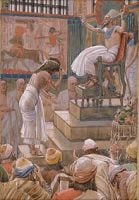
This week, we read in the Torah portion Vayigash (Gen. 44:18–47:27) about Joseph revealing himself to his brothers and Jacob coming to Egypt with his family. This

Synopsis This essay reads Jacob’s agreement with Laban over the streaked, speckled, and spotted sheep as far more than an odd detail in an ancient

And he took him all these, and divided them in the midst, and laid each half over against the other… And it came to pass, that,

Dedicated to the memory of Professor Yaakob David Bekenstein The Torah opens with the word “Bereshit” – in the Beginning – whose first letter, Bet,

Balak the son of Zippor saw all that Israel had done to the Amorites. Moab became terrified of the people, for they were numerous, and

Speak to the children of Israel and you shall say to them that they shall make for themselves fringes on the corners of their garments,

I grew up in Russia and was raised on the metric system based on decimal arithmetic. When we immigrated to the U.S., I had to
Today is Yud Tes Kislev — Rosh HaShanah of Chasidut. Today I received two gifts, which I’d like to share. Lately, while learning Samach Vov,

These are the journeys of the children of Israel… (Numbers 33:1) When G-d brought the Jews out from Egypt, He brought them out with the mystery of
As we began this Shabbat reading the Fourth Book of Torah—Numbers, I thought, it would be appropriate to post on this blog an excerpt from
On Seder night we drink four cups of wine and eat three matzoth. Why four cups and not three? Why three matzoth and not four?
And let them make me a Sanctuary that I may dwell among them (Ex. 25:8) In modern physics, there are two paradigms usually expressed as locality

The Torah portion of Yitro (Ex. 18), is the high point of the story of Exodus—the giving of the Decalogue on Mount Sinai. In a strange

And the house of Israel called the name thereof manna; and it was like coriander seed, white; and the taste of it was like wafers

And the angel of the Eternal appeared unto him in a flame of fire out of the midst of a bush; and he looked, and,

The story of entangled twins is continuing in the Torah portion Vayeitzei (Genesis 28:10–32:3.) Structurally, it is very similar to the story in the previous Torah

Entanglement is often called the most baffling and quintessential phenomenon in quantum mechanics. What is entanglement, in a nutshell? Two particles born from one reaction

Give me the Machpelah (double) Cave Genesis 23:9 The first legal acquisition of land in Israel takes place in this Torah portion, Chayei Sarah, when Abraham
This Rosh HaShanah I had the strangest dream. I dreamed that I was giving a lecture in cosmology at a university when I suddenly realized

There is hardly a Jewish holiday more widely celebrated than Passover (Pesach). Jews of all denominations, affiliations, and levels of religious observance, if any at

And he dreamed, and behold! a ladder set up on the ground and its top reached to heaven; and behold, angels of G‑d were ascending
B’reshit bara Elokim et hashamaim v’et haaretz… In the beginning, G‑d created heaven and earth… Alternative translation: With two beginnings G‑d created heaven and earth…
On the Age of the Universe in the Many-Worlds Interpretation of Quantum Mechanics[*] Alexander Poltorak Abstract The present paper addresses the apparent discrepancy
Presented at the International Torah and Science Conference in Miami International University on December 18, 2005 Alexander Poltorak Introduction. This is the third in
Towards Reconciliation of Biblical and Cosmological Ages of the Universe[1] Alexander Poltorak Abstract Two opposite views of the age of the universe are considered.